This video is sponsored by Pantene. The text version is unsponsored.
There are a lot of myths about hair conditioners – we’re going to bust some in this post! I usually bust myths for free, but this video (but not the blog post) is sponsored by Pantene – even though it is sponsored, everything is my own opinions and research (unfortunately, since they’re paying me, they expect me to do work).
The video is here on YouTube, keep scrolling for the text version…
Myth 1: “Scraping your hair with scissors shows you all the build-up”
Back in the day I did a video debunking a 5 minute crafts segment where they scraped off white stuff from the hair with scissors, and talked about hair products.
It turns out that this test isn’t just a wacky 5 minute crafts exclusive – it’s actually used by a lot of people (often haircare salespeople) to “prove” that silicones are building up on your hair.
To work out what’s going on, I did a quick experiment:
- I washed two samples of hair (twice each) with a clarifying shampoo that’s meant to remove buildup.
- I used Pantene conditioner on one sample, and left the other untouched.
- I blow-dried them to about 90% dryness, then left them to air dry.
- I scraped both hair samples with scissors.
Lots of white “residue” came off the silicone-treated hair:
![]()
Here’s what it looks like under a low-powered microscope – it kind of looks like parmesan cheese curls (it’s a bit of a forbidden snack, although you could totally eat hair safely):
![]()
If this white powder is silicone build-up, we shouldn’t see it with the hair that doesn’t have conditioner… but we do! Here’s the residue, and what it looks like under the microscope…
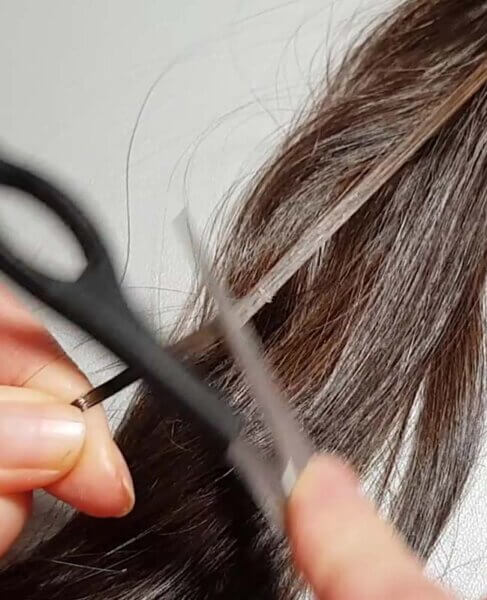
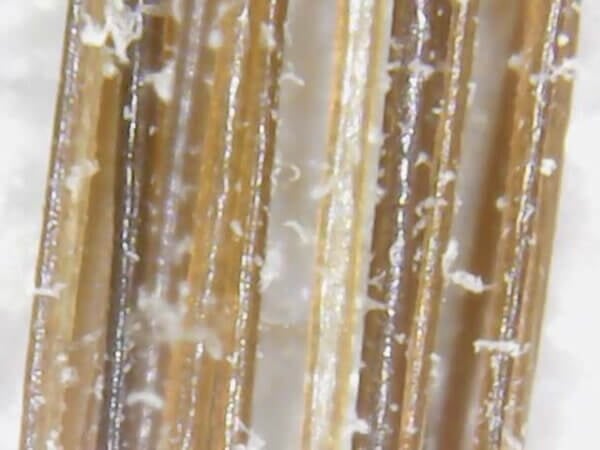
So the white stuff doesn’t seem to be buildup from conditioner. Otherwise we’d see no white stuff with the clarified hair, or at the very least we’d see a big difference between the white powders from the two hair samples.
The scientists at Pantene took higher powered microscope images of the white residue from the two samples, and they give better insight into what’s going on:
![]()
![]()
The structure of hair is like a cylinder, with the cortex on the inside and the cuticle on the outside. The cortex is coloured, while the cuticle is transparent. The cuticle is protective, and has a roof shingle-like structure:
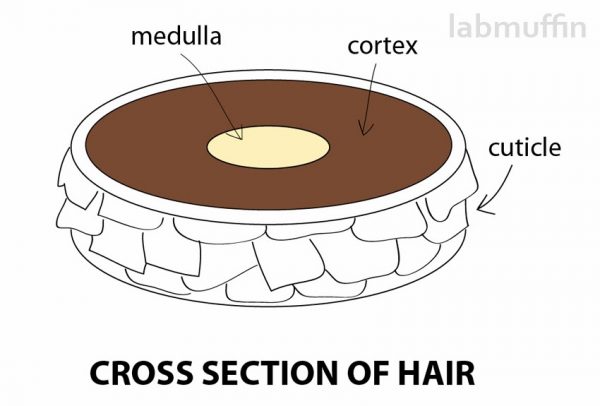
The white waxy residue seems to be hair cuticle that’s been scraped off – you can see the scales in the microscope images.
So this “scrape test” isn’t actually a good way of checking for residue or products building up on your hair.
On top of not showing you anything, it’s also super damaging. The Pantene scientists took microscope images of the hair strands after the scrape test as well. They’re highly damaged and resembles a split end:
![]()
![]()
So don’t do this test at home on your own hair, and please don’t let someone you’re paying to make your hair look nice do this to your hair (I’ve heard of some hairdressers and people selling hair products doing this on their customers’ hair… yikes).
There’s a myth that drugstore conditioners leave buildup on hair while salon conditioners don’t. But the truth is: all conditioning products need to leave stuff in and on the hair to work.
Hair is dead, and the only living part is the bulb that’s inside your scalp. So the hair up near your scalp is intact and the least damaged – it looks like this:
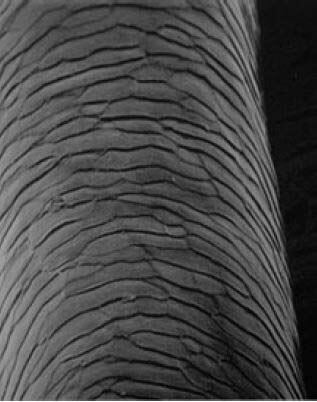
Hair grows at somewhere around 14 cm (5.5 inches) a year, so by the time it reaches the top of your ear it’s about a year old. That’s 365 days of brushing, washing, sun exposure, hair drying, straightening – and on top of that, you might be like me and smash it with bleach. Bits get snapped off the hair, and it ends up looking like this:
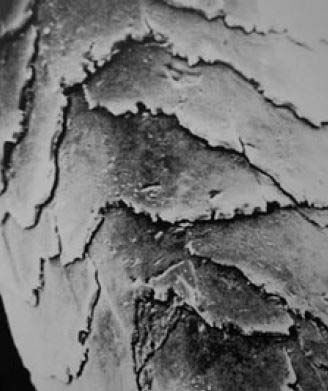
So you can imagine the difference between how these two sections of hair feel. The hair near your scalp feels smooth and doesn’t snag much, while the older, more battered hair is rough. And if two of these chipped surfaces rub up against each other, the damage gets worse.
To make a rough, battered strand of hair feel smooth again, you can’t sand it and remove even more material – it’ll just weaken the hair further. You have to add stuff to the hair to plug up the gaps, much like using putty to repair a piece of wood.
That’s exactly what all conditioning treatments do. They plug up the gaps – not just on the surface, but some ingredients penetrate further as well, filling in weak spots where chunks have washed or worn away. All of this extra reinforcement makes the hair smoother and stronger, and more like intact hair.
If you look at the ingredient list of any standard hair conditioner out there (or almost every single one, I’m sure there’s one that breaks this rule), there’ll be a positively charged cationic surfactant. These include:
- cetrimonium chloride
- behentrimonium chloride
- distearyldimonium chloride
- stearamidopropyl dimethylamine
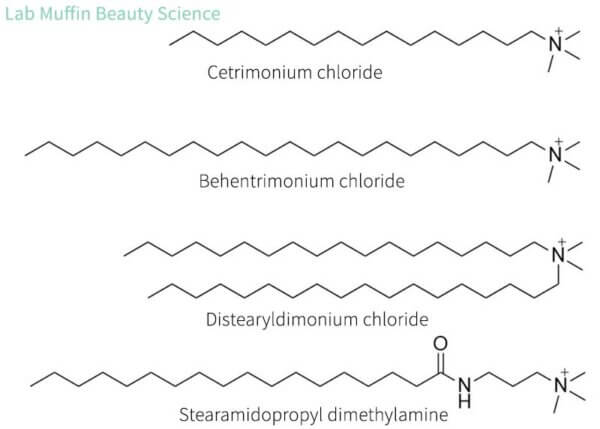
In the acidic pH of a conditioner, these all have a positive charge. The positive charge is integral to how they work.
When hair is wet it acquires a slight negative charge. Opposite charges attract, so these cationic surfactants stick to the hair (the scientific term for this is adsorption):
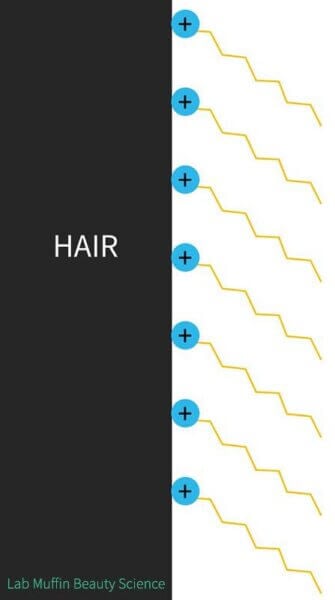
The rest of the surfactant molecule is oily, so it lubes up the hair, smooths it out, and reduces static.
Cationic surfactants are the default conditioning ingredients in hair conditioners. Other conditioning ingredients include polyquaternium polymers, hydrolysed proteins, oils and silicones. All of these work by sticking to hair, regardless of whether they’re in high-end luxury conditioners, or 2-in-1 shampoos that people with short hair tend to use.
So some amount of “buildup” is good and necessary for any conditioner – drugstore or premium – to work. But the amount of buildup is really tiny. The gaps in your hair that the ingredients plug up are microscopic, and the small deposits of ingredients won’t show up in something like the scrape test.
Myth 3: “A product is bad if it weighs your hair down”
A lot of reviews will write off a product as “low quality” if it weighs down hair.
What exactly determines how much conditioning ingredients stick to and stay on your hair? There are three main factors:
- What the ingredient is
- How it’s used on your hair – how much is in the product, the formula of the product, how you use the product
- What your hair is like
I think this final variable is central to why the idea that silicones and cheaper conditioners weigh down and build up on hair. If you use a product that’s meant for, say, more resistant, coarser hair on more porous, finer hair, you can end up with lank, greasy hair that sticks together.
This actually happened to me the first time I bleached my hair. Before bleaching my hair was stereotypical Asian hair (straight, black, not very porous), so I used an intensive repair conditioner with dimethicone and it worked great.

But then after I bleached my hair, the same conditioner made my hair limp and greasy, and I could see dust stuck to my hair.
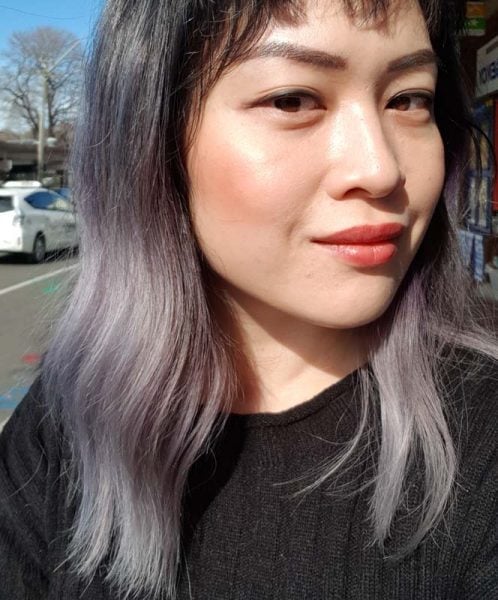
So it wasn’t because my old conditioner was bad – it wasn’t, I used it for years before then, my sister and some of my friends still use it and love it – it just wasn’t right for my hair type.
It’s similar to skincare products and skin type. A product that’s great for dry skin might absolutely suck on oily skin.
Myth 4: “All silicones are the same”
A related myth is that if your hair doesn’t respond well to one product with silicones, your hair will hate all products with silicones. But there’s a massive variety when it comes to silicone ingredients and silicone-containing products.
First off, with silicone ingredients – while my bleached hair doesn’t do well with very intense dimethicone-laden tratments, it loves products with amodimethicone and bis-aminopropyl dimethicone. These are silicones with a positive charge, which means it deposits less on hair. Positive charges repel each other, so once there’s enough on your hair, extra silicones won’t stick on anymore, resulting in a lower chance of it getting overloaded with silicones.
On top of that, the same name on an ingredient list might mean a lot of different ingredients.
For example, dimethicone is a polymer made of silicon and oxygen atoms linked together:
![]()
But the polymer can be lots of different lengths, and different length dimethicones will have different properties. Longer chains of dimethicone will feel heavier and be thicker, while shorter chains are more lightweight and spread through hair more easily.
If you look up the different types of dimethicone you can buy, there are lots of different grades. It’s commonly thought that “different grades of dimethicone” means higher and lower quality types, but it’s actually just different types of dimethicone with different properties that are good for different uses.
So unfortunately, sometimes looking at the ingredients list isn’t that helpful when it comes to picking out a conditioner that suits your hair. Instead, it’s more useful to look at what sort of hair the product says it’s for, read reviews from people with similar hair to you, and try it out on your own hair.
The moral of the story is: there are loads of different silicones, and there are hundreds and hundreds of different silicone ingredients. Just because you’ve had a bad experience with one conditioner with silicones doesn’t mean you need to avoid all silicones – and if you do, you might be missing out on some products that will work really well on your hair.
This video (but not the blog post) is sponsored by Pantene; however, the content is all based on my independent research and my honest experience. For more information, see Disclosure Policy.



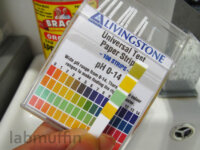
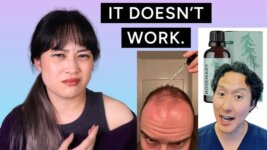
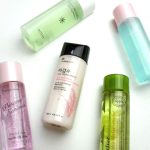
What’s the size of cationic surfactants compared to the size of the cuticle? Do they lay over several cuticle edges or just one where they find a place to attach? Wondering as it relates to hair porosity and all the conditioners that didn’t give my lowish porosity hair “conditioning” effects. Love it when you post about hair!
This is fabulously interesting. I am a man, and a bald man at that, but I used to be married to a hairdresser, so learned a bit about the craft listening to her, and I also have a scientific education, so I appreciate the rigor you bring to this.
I have a couple of questions:
1. Do you trust that the clarifying shampoo truly does remove all built up product from the hair? Have previously tested that, or are you simply making that assumption here?
2. With the scraping test, is that going with, or against, the cuticle?
3. Unrelated: Can you explain why hair of some textures will clump together into what I will call “strands”, a mass of a number of individual shafts that tend to hang together?
Thanks! Keep up the great and interesting work.
1. Some things do cling to hair a bit more and might take a lot of washes to wash out (e.g. henna, some of the more persistent polymers), but the amount is still really tiny, as we can see from the microscope images. There are also other studies which have weighed hair after treatments – it’s clear there isn’t any layer of wax that forms that would give a huge amount of shavings. Someone also commented that they tried this on their baby nephew’s hair which has never had conditioner on it, and it also produced shavings.
2. I was going against the cuticle but it works going with as well (it actually ended up working a bit worse with the silicone because it was slippery!)
3. Could be from using the wrong product for their hair type (too much lipid will stick strands together), or perhaps friction or static? Could also be geometric with the shape of the strands.
Thanks. This is really cool. My ex was a platform artist for Clairol ~ 35 years ago, understood lots about the craft and about the business, but could never explain any of it to me on a scientific level. I appreciate this!
SUPER INTERESTING! I’ve been mostly sticking with R+Co lately on my bleached and festively-dyed hair — their conditioners (at least the 4-5 varieties I’ve tried) do contain various types of dimethicones but they tend to be quite far down the ingredient list rather than #2 or 3. However, their shampoos are all sulfate-free (SLS and SLeS). I read at some point in the hazy distant past that dimethicone/silicone build-up can be hard to remove with sulfate-free shampoos — is this actually true, and if it’s true, does it even matter? I.e. will “dimethicone buildup that’s not removed by your sulfate-free shampoo” be an impermeable film that prevents the beneficial ingredients in your hair care products from penetrating where they need to go?
Great post Michelle! I’m a Materials Science PhD student by day and have recently fallen into the skincare rabbit hole. I love your approach and how you bring real science into these explaining these products. I’ve learned quite a bit! And in this post I feel a little more comfortable seeing SEM micrographs. 🙂
I was wondering if you’ve ever done a post on the “No Poo or Low Poo” trend where people stop (or at least minimize) washing their hair with shampoo. I couldn’t find any using the search function on your site but was curious—is this based on anything real? Can it work for some hair types? Or is it all just a backlash against nebulous “chemicals” like aluminum in deodorant? (loved that post too) Of course, I’d love to save money and never buy shampoo again… but braving greasy, lank locks for months ain’t it, especially if it doesn’t even work!
Throw curly hair into the mix and this is even more complicated!
Seeing the thumbnail with the scissors and the hair made me so uneasy! My hair is easily damaged, so simply the thought of scraping my hair is horrifying!
So great to see a big brand promoting SCIENCE and sponsoring one of your posts, as well as providing microscope images. This his is the sort of sponsorship that unleashes the brand’s scientists, not its marketers! I have thin, limp hair, but still use silicone based serums because they are the only thing that prevents tangling and damage when my hair grows long. I wash every other day and one shampoo a week is with a more clarifying shampoo and I skip the serum to prevent buildup. I do have a question – could you cover anti-dandruff shampoos at some point? I just got one and unfortunately it does leave some buildup which ends up feeling greasy by the end of the week, and it is not specified as something for anti-frizz or thick hair or anything like that. Is it normal for anti-dandruff shampoos to have a build up of some kind? Many thanks for your informative posts!
Your helpful explanation of amodimethicone and bis-aminopropyl dimethicone is a start in understanding these ingredients. So a light deposit of silicone(s) from a product should be ok for fine hair. Since these would wash out easier. This is from a person who focuses on au naturale ingredients.
Michelle, would you consider doing a detailed hair science post/ video on what kinds of ingredients and formulas benefit hair with different characteristics?
Advice for bleached or otherwise damaged hair is easy to come by but if your hair is not damaged and you’re looking for specific results, it’s hard to figure out what to use. Similarly, there are lots of products designed to increase hair volume (no weigh down) but not many to reduce volume.
To use my own hair as an example, I have thick, wiry, straight individual strands and a LOT of them. I also dye my hair with henna and indigo, which thickens it further. I need conditioners that will make my hair feel softer and more pliable, and look sleeker and less voluminous. I do a bit of trial and error but it’s mostly shooting in dark without knowing what ingredients are more likely to give me the results I’m looking for.
The selection of products to try is also small because in my country many companies have replaced parabens with MI in conditioners. This includes your sponsor here — I used one of Pantene’s conditioners in rotation with others, then they went and put MI in every single one of their products here.
Thank you for your work and I look forward to seeing more hair related posts from you!
Can you make a post about silicones? Some say they are biodegradeable, some say they are not. Some say they are inert, some say they are not. I also wonder about absorption through the skin, mucous membranes (like with lube) or in the digestive tract (lip products).
I have one here: https://labmuffin.com/silicone-mythbusting-with-video/